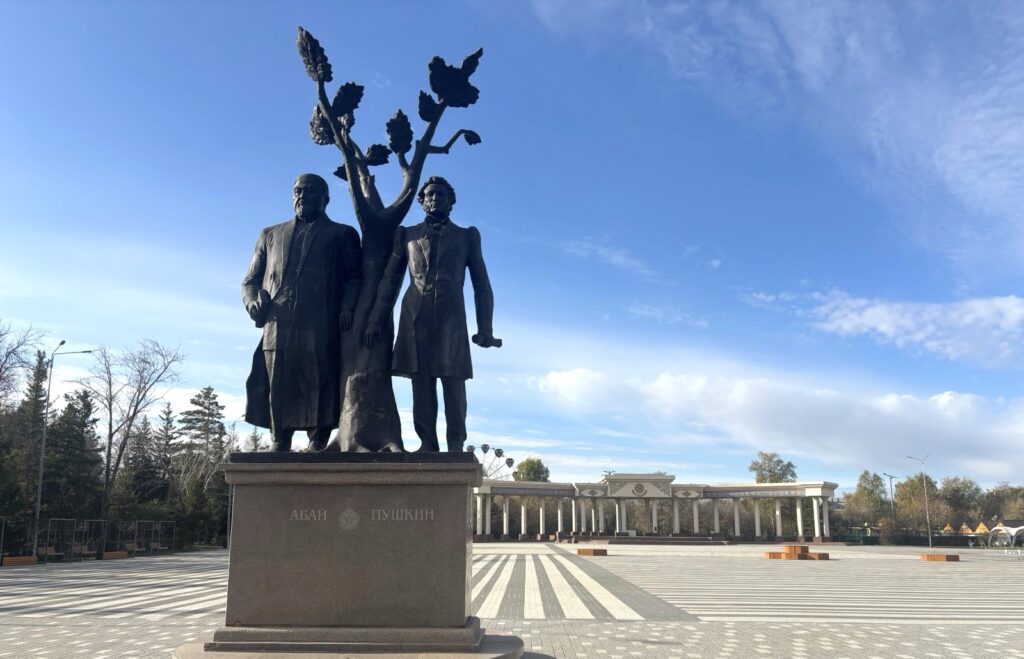Since February 2022, international observers have been predicting changes in labor migration in Central Asia. It is no secret that for 30 years Russia was the main attraction for labor resources in the region, and in the “noughties,” Kazakhstan joined as a viable alternative. Over the past two years, the geography of labor migration from Central Asia has expanded somewhat, but still not to the extent that one could say that the region is slipping away from Moscow’s economic influence.
In Russia itself, despite growing anti-migrant sentiment after the terrorist attack at the Crocus City concert hall, the country’s leadership has no intention of refusing to accept migrants from Central Asia. The current phase of Russia’s economic development requires a constant inflow of labor resources, so Moscow is even talking about expanding the geography of sources of labor on an industrial scale, particularly to African countries.
However, the movement of labor resources from Central Asia to the outside world is a process that benefits both the countries of origin of migrants and those who receive them. The region’s countries shed their excess population, thus avoiding possible social explosions, while the receiving countries get workers willing to do low-paid and low-skilled labor. This is true for three of the five Central Asian countries. We do not consider Turkmenistan — a republic closed to the outside world — but labor migration from Kazakhstan is more like a “brain drain,” which puts it on a par with Russia, which is experiencing similar problems.
In the Central Asian republics, the topic of labor migration is still victimized, and the pejorative term “gastarbeiters” remains in common use. Thus, research on these processes is not permanent, which makes it difficult to work with statistical data. And since the largest receiving country is Russia, where chaos reigns regarding labor migration, we can only operate with approximate data.
Uzbekistan
Let us start with Uzbekistan, the most populous republic in Central Asia. Uzbekistan does not have the same opportunities as Kazakhstan with mineral resources, primarily oil. In Uzbekistan, the rate of labor migration abroad remains the fastest; only the pandemic has been able to affect it. Before the pandemic, in 2019, according to official data, more than 2.5 million Uzbek citizens were listed as labor migrants. In 2021, this number dropped to 1.67 million people, but now, the number of those who left for work has recovered.
The main labor migration flows come from Russia – 71%, Kazakhstan – 12%, South Korea – 4% and Turkey – 3%.
In the first quarter of 2024, cross-border remittances to Uzbekistan increased from $2.3 billion to $2.5 billion. Russia’s share dropped to 68% (78-87% in previous years).
Kyrgyzstan
Russia, Turkey, and Kazakhstan are also the main destinations for migrants from Kyrgyzstan. South Korea and the UK have been added to the list recently.
According to open-source data, in 2022, 1.2 million labor migrants from Kyrgyzstan were registered in Russia, with about 30,000 in Turkey and Kazakhstan.
In Kyrgyzstan, labor migration has become important in maintaining economic and social stability. According to official data, labor migrants transferred $518 million to Kyrgyzstan in the first quarter of 2022 alone. Almost 97% of remittances to the republic are from Russia.
Tajikistan
In 2023, 652,014 people left Tajikistan to work abroad, according to the Ministry of Labor, Migration and Employment.
Of the total number of people who went abroad, 627,028 were from Russia, 18,418 from Kazakhstan, and 6,568 from other states.
According to various estimates, there may be more than 1.5 million Tajikistani workers in Russia. The volume of remittances to Tajikistan approached 40% of GDP in 2022, making the republic the world record holder in terms of dependence on them.
Kazakhstan
In the mid-2000s, more than one million people came to Kazakhstan as labor migrants annually and were estimated to account for 10 to 12% of the country’s gross domestic product (GDP).
The process took a rather quick and orderly form. In 2006, an amnesty law was passed, granting three-year legal status to migrants who had arrived in the country before June of that year. By the end of 2006, 165,000 irregular labor migrants had been legalized, a unique case in CIS practice. In 2013, Kazakhstan amended several laws related to the employment of domestic workers, which again allowed the legalization of a significant portion of previously illegal migrants and, at the same time, increased budget revenues through tax levies on migrants.
Last year, for the first time since 2011, the migration balance was positive for Kazakhstan — more citizens entered the country than left. According to reports from the Bureau of National Statistics, last year the number of migrants moving to Kazakhstan for permanent residence from Central Asian countries increased by 10.4% – from 8,500 to 9,300 people. The trend continued in the first quarter of 2024, up 11.8% to the same period last year.
The last cut showed that 724,500 labor migrants came to Kazakhstan for work in 2020-2023. According to these estimates, 79.7% of them, or 577,400 people, came from Uzbekistan, and 4.2%, or just over 30,000 people, from Tajikistan.
According to Kazakhstan’s Ministry of Labor and Social Protection of Population, in 2023, 194,000 Kazakhs left Kazakhstan for work. 162,000 of them went to work in Russia, and 13,100 in Poland. Six thousand chose South Korea, and 5,000 chose Great Britain.
Demography above all
Thus, Central Asia’s economic dependence on Russia, where surplus labor resources are dumped without any problems, looks insurmountable at the moment. But does this mean that Russia is ready to accept Central Asia as part of its hypothetical empire or USSR-2.0, as Western observers are trying to convince us?
In his Telegram channel, Kazakhstani political scientist Marat Shibutov convincingly showed how such fantasies detached from realities will end.
“Where will it lead to? Russia had a population of 145 million, now 220 million. But it is very important that among 85 million new citizens Slavs will be only 4 million, and Asian people will be 81 million. At once all unemployed residents of Central Asia will gather and on quite legal grounds (they are also citizens of Russia) will go to the big cities of Russia. If now 4 million Asian migrants are moaning in Russia, what will happen if 20 million will come there and they will not be deported anywhere? And 10 million will come to Moscow and the Moscow region,” Shibutov argues.
However, according to political scientists, the main thing is that the balance in the youth environment will change dramatically, which is of direct importance for Russia’s future.
“There are 24 million young people in Russia now, and about 28 million in Central Asia. Population growth will be greatly boosted if the region’s population starts receiving maternity capital and other Russian social benefits. And where will this lead to? To the fact that in a generation our region will make up the bulk of the youth and middle-aged people, and in two generations it will already completely dominate the population structure,” Shibutov adds.
In short, returning to reality, we should emphasize that Central Asia’s demographic balance is favorable. The region will continue to produce labor resources, slowly but steadily changing the political balance in the so-called Greater Eurasia.









